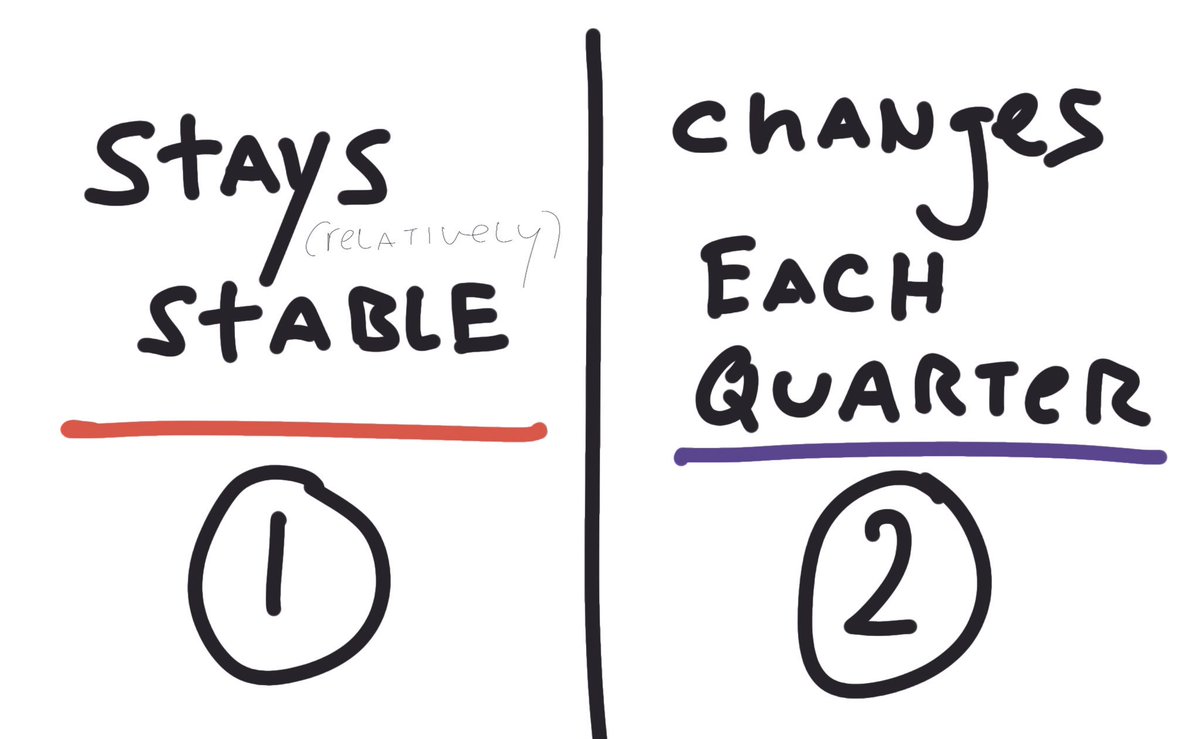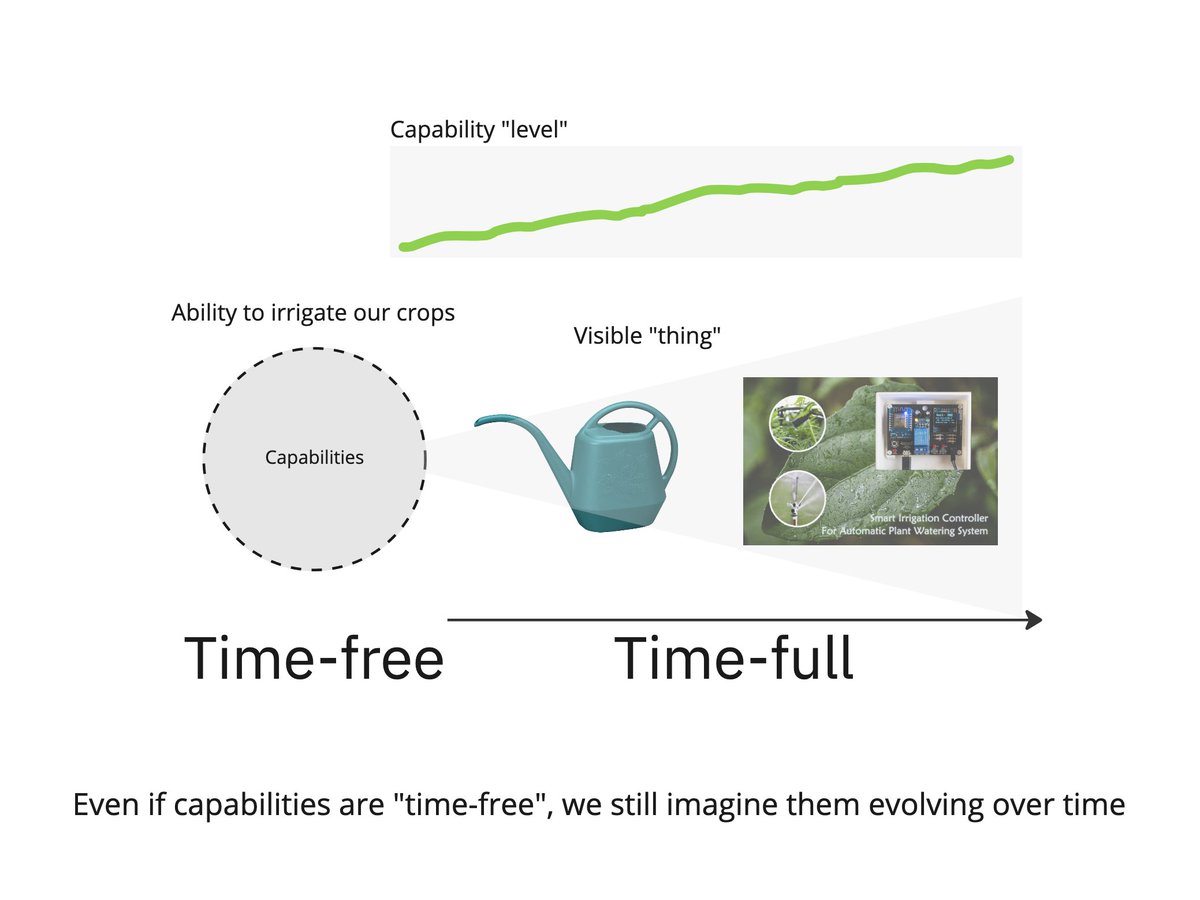Some virtual scribbles from an @Amplitude_HQ session today on OKRs, North Stars, etc.
First, we need to make a distinction between things that say relatively stable, and things that change more often...like every quarter. (1/8)
First, we need to make a distinction between things that say relatively stable, and things that change more often...like every quarter. (1/8)

A great product strategy creates the foundation for long-term success. It is customer lifetime value focused... not chasing short-term revenue, silver bullets, and success theater
A great product strategy hopefully stays more stable. It persists (2/8)
A great product strategy hopefully stays more stable. It persists (2/8)

Put another way ... in #1 below we chase short term revenue, but fail to build a sustainable, meaningful biz. In #2, we might focus on happy customers, which we believe will lead to long term success (3/8) 

We have a decision making framework (that encompasses our beliefs, assumptions, data, view of the landscape, etc.) ... and hopefully that stays relatively stable, and then we have our actual decisions that have an element of time, tacking back and forth, pivoting... (4/8) 

Anyway. How does this relate to OKRs? For many, quarter planning is basically quarter packing ... how much crap can we fit in a quarter and still make our “commitments”. If this is your mindset, OKRs are not your friend. They weren’t designed to help you do this. (5/8) 

Now, say we have our decision framework that persists with a North Star and some inputs. Our goal is to move A from where it is today, to some higher level in the future. Sure we’ll try a lot of “work” to make that happen but the important thing is that we’re focusing on A. (6/8) 

Note how this is different from OKRs in many orgs where teams are scrambling for more context, and feel like they’re “starting from scratch each quarter”.
In the above example, a team has a mission to move A bc A is important. And they’ll spend multiple quarters doing so (7/8)
In the above example, a team has a mission to move A bc A is important. And they’ll spend multiple quarters doing so (7/8)
So that’s the lesson ... OKRs are great, but you need, in parallel, a model that persists that explains your product strategy. Ideally with inputs. Ideally that is a leading indicator of sustainable growth and making humans happy. (8/8)
• • •
Missing some Tweet in this thread? You can try to
force a refresh















